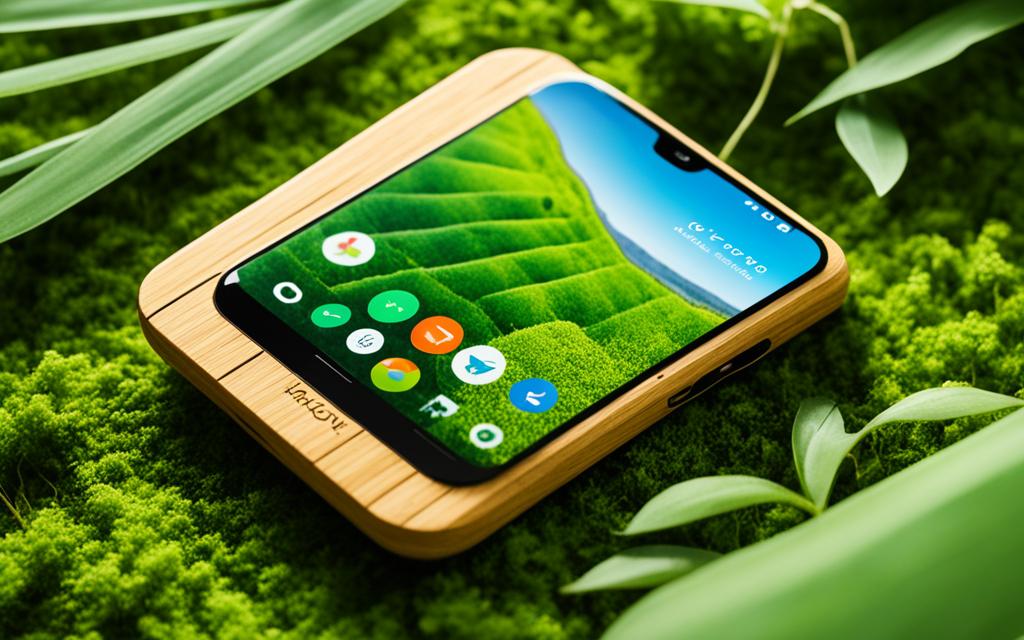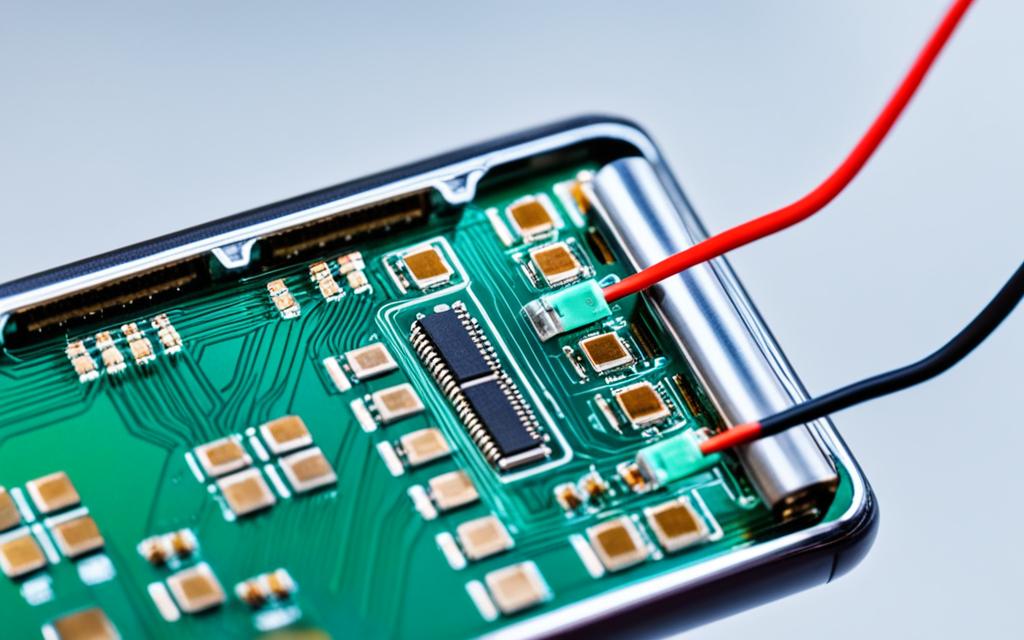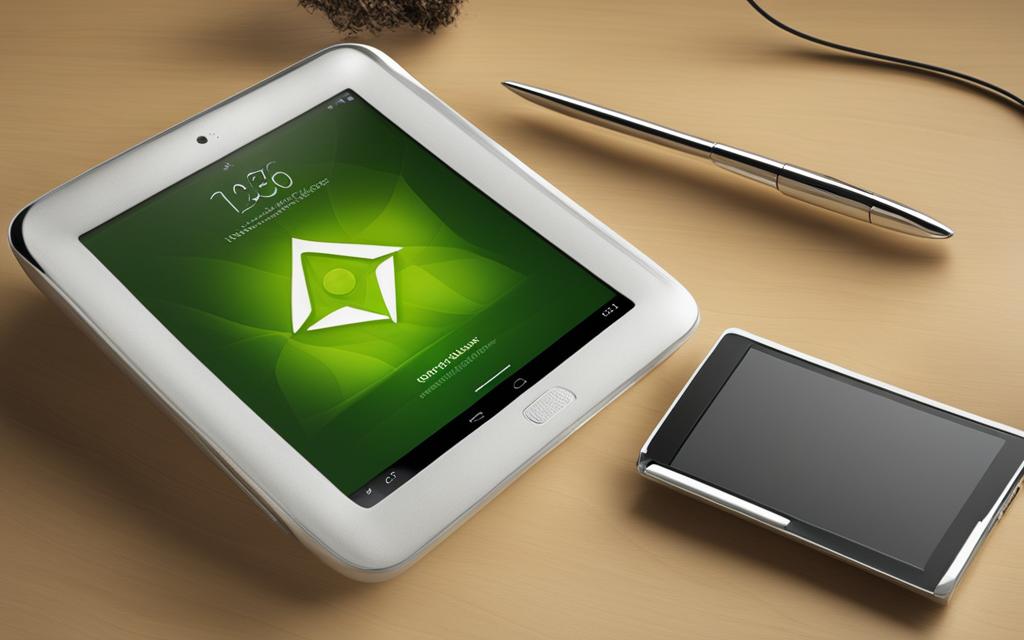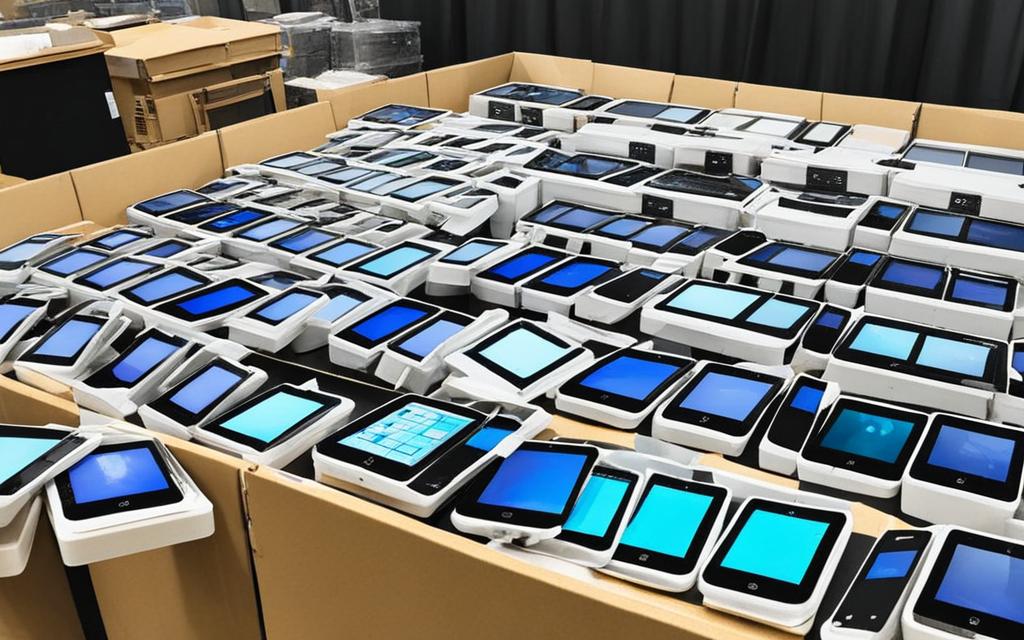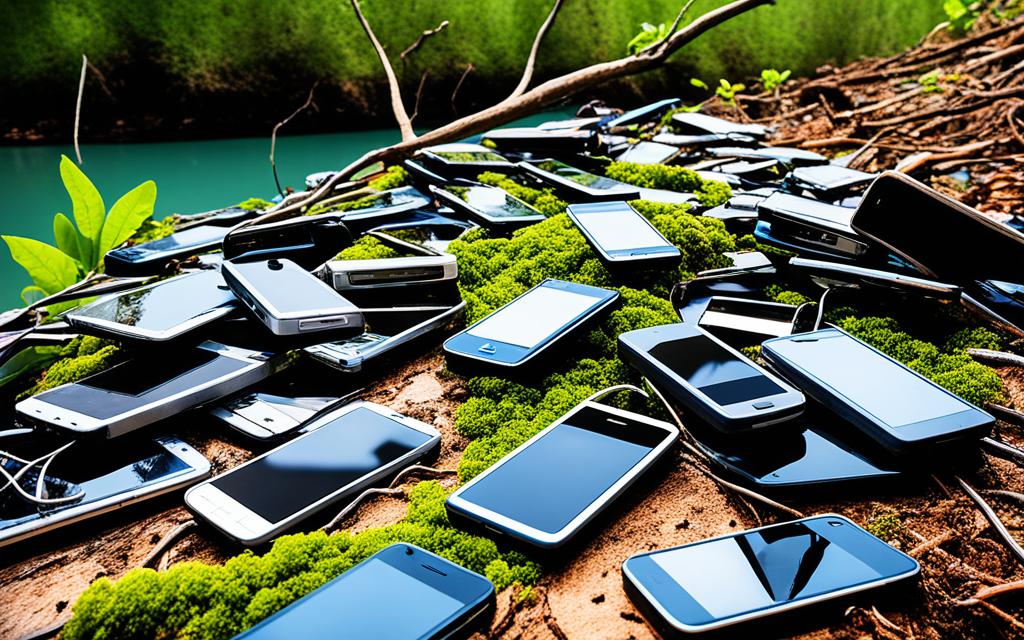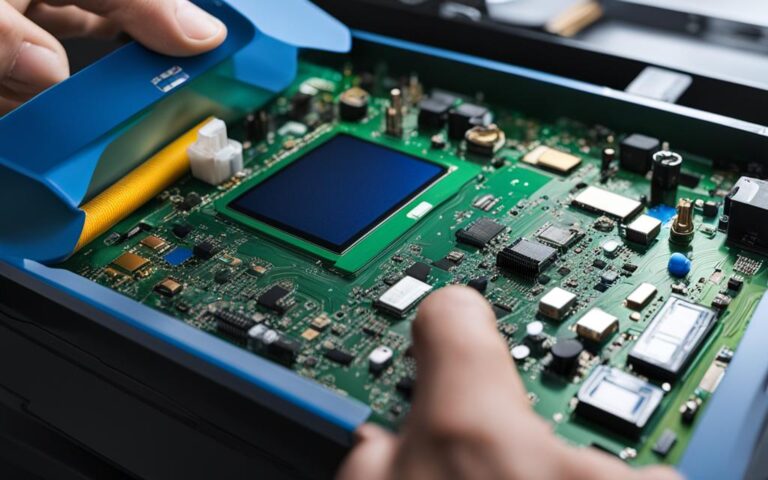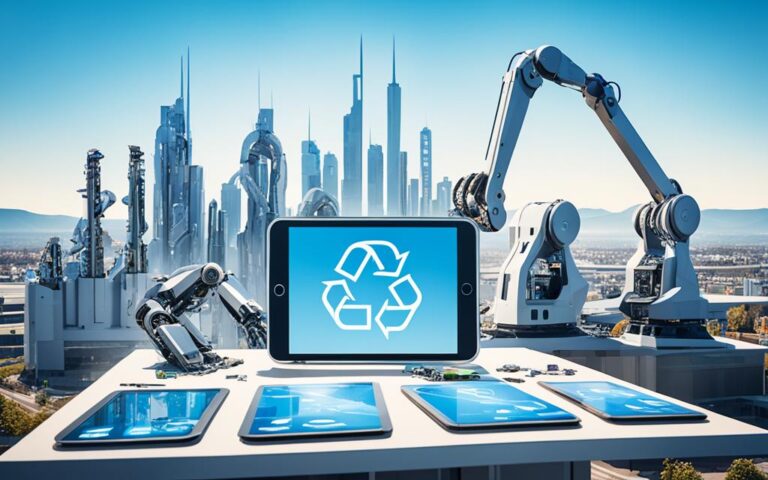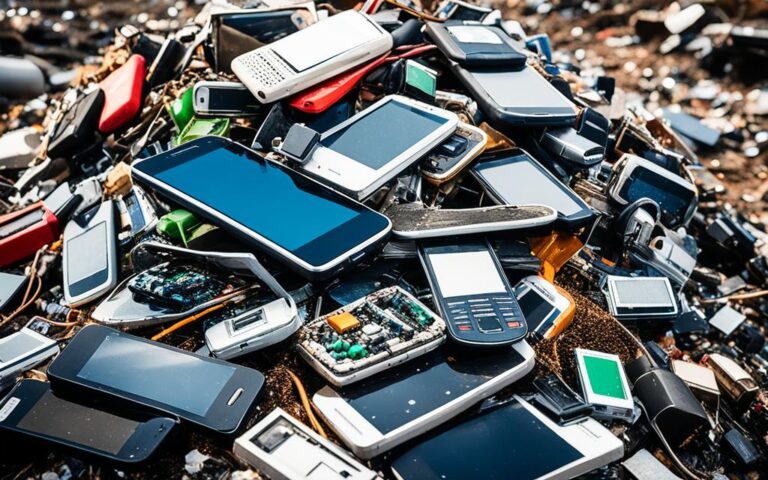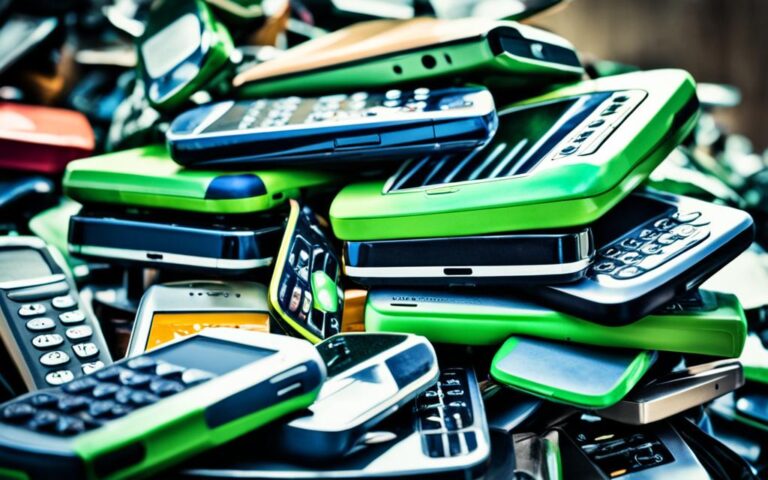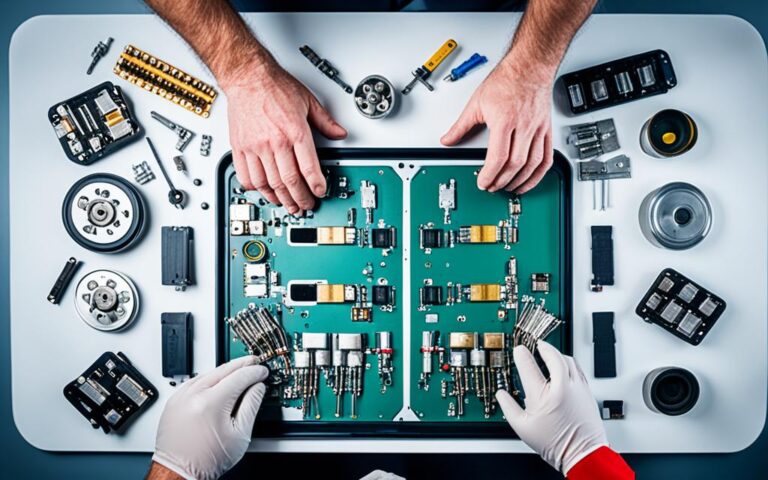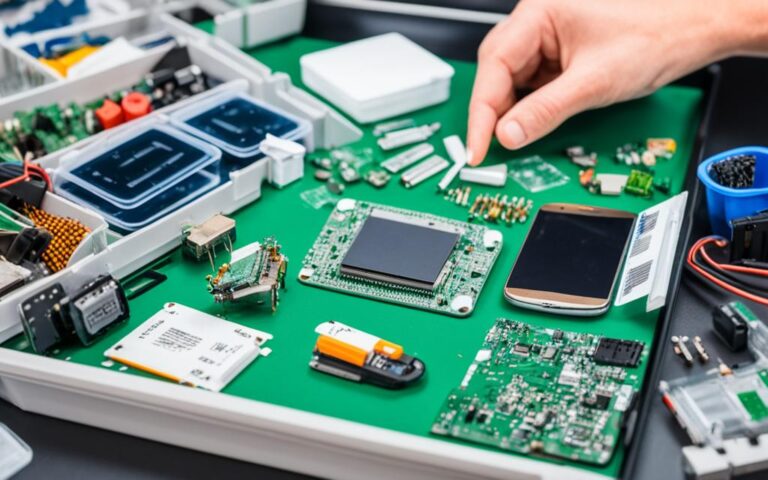The Future of Sustainable Mobile Phones
Welcome to the future of sustainable mobile phones, where innovation meets environmental responsibility. In a world where electronic waste continues to grow at an alarming rate, it is crucial to look for eco-friendly solutions that can shape the future of mobile technology.
One pioneering company leading the way is Fairphone, a Dutch social enterprise. Fairphone has revolutionized the smartphone industry by creating a sustainable smartphone that is both repairable and customizable. This innovative approach aims to tackle the issue of electronic waste, the fastest-growing waste stream on the planet. By extending the lifespan of mobile phones and reducing the need for new devices, Fairphone is making a significant impact in the fight against electronic waste.
With their commitment to repairability and longevity, Fairphone is not only minimizing electronic waste but also using sustainable materials in their phones. For instance, they incorporate 100% recycled plastic and source fairtrade gold and silver. While there is still room for improvement in terms of sourcing sustainable materials, Fairphone is actively working towards making their devices as sustainable as possible.
The future of mobile phones lies in their sustainability. By choosing eco-friendly smartphones and supporting companies like Fairphone, we can contribute to a brighter future for our planet and preserve it for the generations to come. Get ready to embrace the revolution and join us on this journey towards a more sustainable mobile phone industry.
The Impact of E-Waste
Electronic waste, or e-waste, is a growing concern worldwide. It is estimated that 50 million tonnes of electronic waste are produced each year, weighing more than all commercial airliners ever made. However, only 20% of this waste is recycled. The demand for portable devices and smartphones is increasing, leading to a projected doubling of annual electronic waste production to 120 million tonnes by 2050. In 2022 alone, 5.3 billion mobile phones were thrown away.
To tackle this issue, Fairphone aims to break the trend of short phone lifespans by creating phones that have a longer working life. By making phones repairable and encouraging consumers to use their devices for a longer time, Fairphone aims to reduce electronic waste and promote sustainability.
Fairphone’s Approach to Sustainability
Fairphone is dedicated to promoting sustainability throughout its supply chain. The company actively sources fairtrade gold and silver for its phones, ensuring that the materials used meet ethical standards and contribute to the improvement of working conditions in mines and factories. By prioritizing fairtrade materials and ethical labor practices, Fairphone is taking significant steps towards creating a more sustainable mobile phone industry.
While Fairphone’s materials sourcing practices have shown progress, there is still room for improvement. In an effort to enhance sustainability, Fairphone has increased the number of materials sourced from sustainable and ethical sources. However, experts in an independent review have suggested that further efforts should be made to procure more materials from fair and certified sources, as well as create phones that are both repairable and upgradeable.
“Fairphone’s commitment to sustainability is commendable. By sourcing fairtrade materials and addressing ethical working conditions, the company is setting a positive example for the industry. However, there is a continued need to prioritize fair and certified sources of materials, as well as emphasize repairability and upgradability in phone design.”
To achieve its ultimate goal of proving that sustainable smartphones can be profitable, Fairphone recognizes the importance of incorporating sustainability improvements, despite the higher price tag associated with such devices. By showcasing the viability of sustainable practices, Fairphone inspires other manufacturers to prioritize eco-friendly approaches in their own operations.
To highlight Fairphone’s sustainability efforts, let’s take a closer look at the impact of fairtrade materials, ethical working conditions, and sustainability improvements:
Fairtrade Materials
Fairphone incorporates fairtrade gold and silver into its phone production, ensuring that these precious metals have been responsibly sourced and do not contribute to conflict or human rights abuses. By supporting fairtrade practices, Fairphone promotes responsible mining and sets a positive example for the industry.
Ethical Working Conditions
Fairphone collaborates with mines and factories to improve working conditions and ensure fair wages for workers involved in the production of its phones. By prioritizing ethical labor practices, Fairphone aims to create a more humane and sustainable supply chain.
Sustainability Improvements
“Sustainability improvements are essential for the mobile phone industry to address its environmental impact. Fairphone’s focus on repairability and upgradability contributes to a longer lifespan for devices, reducing electronic waste and promoting a circular economy.”
By placing an emphasis on sustainability improvements, Fairphone is actively working towards reducing electronic waste and mitigating environmental harm caused by the smartphone industry. Through innovative design and materials sourcing, Fairphone is paving the way for a more sustainable future.
| Benefits of Fairphone’s Sustainability Approach | Impact |
|---|---|
| Reduction in electronic waste | Minimizes the environmental impact of smartphone disposal and encourages a circular economy. |
| Improved working conditions | Supports fair wages and ethical labor practices in mines and factories. |
| Promotion of responsible sourcing | Encourages the use of fairtrade materials, such as gold and silver, to prevent harm to communities and the environment. |
| Longer lifespan for devices | Reduces the need for frequent upgrades and helps consumers save money while minimizing electronic waste. |
Fairphone’s commitment to sustainability sets it apart from traditional smartphone manufacturers. By sourcing fairtrade materials, improving ethical working conditions, and prioritizing sustainability improvements, Fairphone is leading the way towards a more eco-conscious future in the mobile phone industry.
The Push for Right to Repair
The right to repair movement is gaining significant traction, especially within the European Union. In a bid to promote sustainability and reduce electronic waste, new battery regulations have been approved that require smartphones and gadgets to have replaceable batteries available for at least five years after they are discontinued. Additionally, manufacturers will be prohibited from using software that prevents third-party batteries from functioning. These regulations aim to ensure that consumers can easily replace batteries and extend the lifespan of their devices, ultimately reducing electronic waste.
In line with the push for sustainability, new ecodesign rules have also been introduced. These rules aim to foster product designs that are easier to repair, upgrade, and recycle. Manufacturers now have to adhere to minimum requirements for smartphones and tablets, such as providing protection from dust and water, resistance to accidental drops, and ensuring battery longevity. By enforcing these ecodesign rules, the EU is driving change in the smartphone market and encouraging manufacturers to prioritize sustainability.
“The right to repair empowers consumers to take control of their devices’ lifecycle and allows for a more sustainable approach to technology.” – European Commission
By promoting the right to repair and implementing these battery regulations and ecodesign rules, the EU is paving the way for a more sustainable future in the smartphone industry. These initiatives not only reduce electronic waste but also empower consumers to make environmentally conscious choices. As the movement continues to gain momentum, it is expected that more countries and regions will adopt similar policies and regulations, further driving positive change in the industry.
The Evolution of Phone Design
Phone design is constantly evolving, driven by advancements in technology and consumer demands. Innovative features and functionalities are rapidly becoming the norm in the mobile industry, shaping the future of mobile technology.
Samsung, a leader in smartphone innovation, has introduced a groundbreaking design element with the camera under the display. This cutting-edge technology allows for a seamless and unobstructed screen experience, free from any intrusive camera notches or punch-holes. Users can now enjoy a more immersive visual experience, without compromising on the quality of their photos and videos.
Another significant development in phone design is the improvement of wireless charging technology. As wireless charging speeds continue to improve, it has become increasingly convenient for users to charge their phones without the hassle of cables. This wireless charging capability offers a seamless and clutter-free charging experience, enhancing the overall user experience.
Foldable phones, such as Samsung’s Galaxy Fold series, present a new era of mobile innovation. These devices are equipped with flexible screens that can be folded, offering users the convenience of a compact phone that can transform into a tablet-sized display. Foldable phones not only provide a larger screen real estate for enhanced productivity but also open up new possibilities for multitasking and content consumption.
“The possibilities for foldable phones are endless and represent the future of mobile technology.”
Another exciting development in phone design is the emergence of holographic displays. These displays allow users to interact with 3D images by bending the flexible device. Holographic displays offer a unique and immersive experience, bringing a new dimension to gaming, content creation, and virtual reality applications.
Advancements in Phone Design:
- Camera under the display for a cleaner and unobstructed screen experience.
- Improved wireless charging technology for a hassle-free charging experience.
- Foldable phones that offer larger displays and enhanced productivity.
- Holographic displays for interactive 3D experiences.
These advancements in phone design are revolutionizing the way we use and interact with our mobile devices. As technology continues to advance, we can expect even more exciting innovations that will shape the future of mobile technology.
The Role of Software in Longevity
Software plays a crucial role in the longevity of smartphones. Without regular software updates, phones are vulnerable to security risks and may lose functionality with certain apps. Currently, most phones receive only two to three years of updates from their initial release. However, there is a push for longer software support, with manufacturers being urged to provide updates for at least five years after a device is discontinued. This ensures that customers can continue to use their phones safely and access all the latest features and apps.
Open-source software solutions, such as LineageOS or PostmarketOS, are also being considered as alternatives to extend the lifespan of older devices beyond official support.
Open-source software solutions offer several benefits:
- Community-driven development, where developers worldwide contribute to software improvements and bug fixes.
- Greater transparency, as the source code is open and can be audited by security experts and enthusiasts.
- Flexibility to customize and modify the software to meet individual needs and preferences.
Implementing open-source software solutions can significantly extend the lifespan of smartphones, as the community can continue supporting and releasing updates for older devices even after manufacturers discontinue their official support.
The Importance of Regular Software Updates
Regular software updates are crucial for maintaining the security and functionality of smartphones. By regularly releasing updates, manufacturers can address potential vulnerabilities and patch security flaws that may be exploited by hackers. Additionally, updates often include optimizations and bug fixes that improve the overall user experience and performance of the device.
Moreover, compatibility with new apps and features is another critical aspect of software updates. As the mobile ecosystem evolves, new apps and services may require the latest software version to function properly. Without updates, users may face compatibility issues and limitations when trying to use new applications.
“Software updates play a vital role in ensuring the longevity and usability of smartphones. By providing regular updates and extending software support, manufacturers can empower users to make the most of their devices and reduce electronic waste.”
For example, Apple is known for providing long-term software support for its devices, with the latest software updates available even for devices that are several years old. This commitment to software updates not only ensures a secure and seamless user experience but also contributes to the longevity and value retention of Apple devices.
A Comparison of Software Support
| Manufacturer | Initial Software Support | Longer Software Support Initiative |
|---|---|---|
| Apple | 5-6 years | Software updates for approximately 7 years after device discontinuation |
| Samsung | 3-4 years | Commitment to providing security updates for at least 5 years after device release |
| 3 years | Extending security updates for at least 5 years after device release |
The table above provides a comparison of software support from popular smartphone manufacturers. While some companies are already taking steps to offer longer software support, there is still room for improvement across the industry to ensure that all smartphones receive extended software updates and have a longer lifespan.
The Environmental Impact and Solutions
Smartphone manufacturers are increasingly focusing on reducing their environmental impact and promoting sustainability. This includes exploring sustainable materials for phone production and adopting cleaner energy charging methods. The emergence of eco-conscious phones, like the Ecophone, showcases a growing trend towards more environmentally friendly options. Additionally, the resurgence of refurbished phones offers a more sustainable choice as they require fewer emissions to reach the market compared to new devices. To further reduce the environmental burden, manufacturers are committing to achieving net zero emissions by 2050. The combination of sustainable materials, refurbished options, and cleaner energy practices is reshaping the landscape of smartphone technology.
| Environmental Impact Solutions | Benefits |
|---|---|
| 1. Sustainable materials | – Reduces reliance on non-renewable resources – Minimizes environmental damage caused by extraction – Decreases carbon footprint |
| 2. Refurbished phones | – Extends the lifespan of devices and reduces electronic waste – Lowers energy consumption and emissions during production – Provides more affordable options for consumers |
| 3. Net zero emissions commitment | – Mitigates climate change impacts – Promotes the transition to renewable energy sources – Ensures a sustainable future for smartphone technology |
“The conscious adoption of sustainable materials and practices, along with the availability of refurbished options, play a crucial role in minimizing the environmental impact of smartphone manufacturing. Coupled with the commitment to achieve net zero emissions, the smartphone industry is making significant strides towards a more sustainable future.” – [Quote Source]
Conclusion
The future of sustainable mobile phones looks bright, with companies like Fairphone leading the way towards a more eco-friendly and ethical mobile phone industry. Fairphone’s focus on repairability and longevity addresses the pressing issue of electronic waste by encouraging consumers to extend the lifespan of their devices. By creating phones that can be easily repaired and customized, Fairphone aims to reduce the need for new phone production and the resulting electronic waste.
However, there are still challenges to overcome in terms of sourcing sustainable materials and improving ethical working conditions throughout the supply chain. It is crucial for companies to prioritize environmentally friendly and fairtrade materials to further promote sustainability in the industry.
The push for right to repair legislation and longer software support from manufacturers also plays a significant role in creating a more sustainable future. By allowing consumers to repair and upgrade their devices easily, manufacturers can reduce electronic waste and extend the lifespan of phones. Likewise, longer software support ensures that phones remain functional and secure, reducing the need for frequent upgrades.
As smartphone design continues to evolve, with exciting features like under-display cameras and foldable displays, the future of mobile technology holds great potential for sustainability. By embracing sustainable practices and innovative designs, we can not only reduce electronic waste but also create a brighter future for our planet and the mobile phone industry as a whole.
FAQ
What is Fairphone’s approach to sustainability?
Fairphone is committed to sustainability throughout its supply chain. The company sources fairtrade gold and silver for its phones and focuses on improving ethical working conditions in the mines and factories it collaborates with. Fairphone also aims to use sustainable materials in its phones, such as recycled plastic and fairtrade materials. However, there is still room for improvement, and the company is working towards sourcing more materials from fair and certified sources.
Why is electronic waste a concern?
Electronic waste, or e-waste, is a growing concern worldwide. It is estimated that 50 million tonnes of electronic waste are produced each year, with only 20% being recycled. The demand for portable devices and smartphones is increasing, leading to a projected doubling of annual electronic waste production to 120 million tonnes by 2050. Fairphone aims to reduce electronic waste by creating phones that have a longer working life through repairability and encouraging consumers to use their devices for a longer time.
What is the push for the right to repair?
The push for the right to repair is gaining momentum, particularly within the European Union. New battery regulations have been approved, stating that smartphones and gadgets should have replaceable batteries available for at least five years after the device is discontinued. Manufacturers will also be prohibited from using software to stop third-party batteries from working. Additionally, new ecodesign rules aim to make products more sustainable by requiring designs that are easier to repair, upgrade, and recycle.
How does phone design impact sustainability?
Phone design plays a significant role in sustainability. Companies like Samsung are leading the way by introducing innovative features such as cameras under the display, wireless charging, and foldable phones. These advancements not only enhance user experience but also contribute to reducing electronic waste by making phones more durable and long-lasting.
What is the role of software in smartphone longevity?
Software plays a crucial role in the longevity of smartphones. Without regular software updates, phones are vulnerable to security risks and may lose functionality with certain apps. Manufacturers have been urged to provide updates for at least five years after a device is discontinued to ensure that customers can continue to use their phones safely and access all the latest features and apps. Open-source software solutions are also being considered as alternatives to extend the lifespan of older devices beyond official support.
How can mobile phone manufacturers reduce their environmental impact?
Mobile phone manufacturers are increasingly focusing on reducing their environmental impact and promoting sustainability. This includes exploring sustainable materials for phone production, adopting cleaner energy charging methods, and offering refurbished options. Manufacturers are also committing to achieving net zero emissions by 2050, further reducing the environmental burden caused by the production and disposal of mobile phones.
What is the future of sustainable mobile phones?
The future of sustainable mobile phones is promising. Companies like Fairphone are leading the way in promoting repairability and longevity, aiming to reduce electronic waste and create a more sustainable mobile phone industry. The push for right to repair legislation and longer software support from manufacturers also contributes to a more sustainable future. With ongoing advancements in phone design and features, the possibilities for sustainable mobile technology are expanding.

